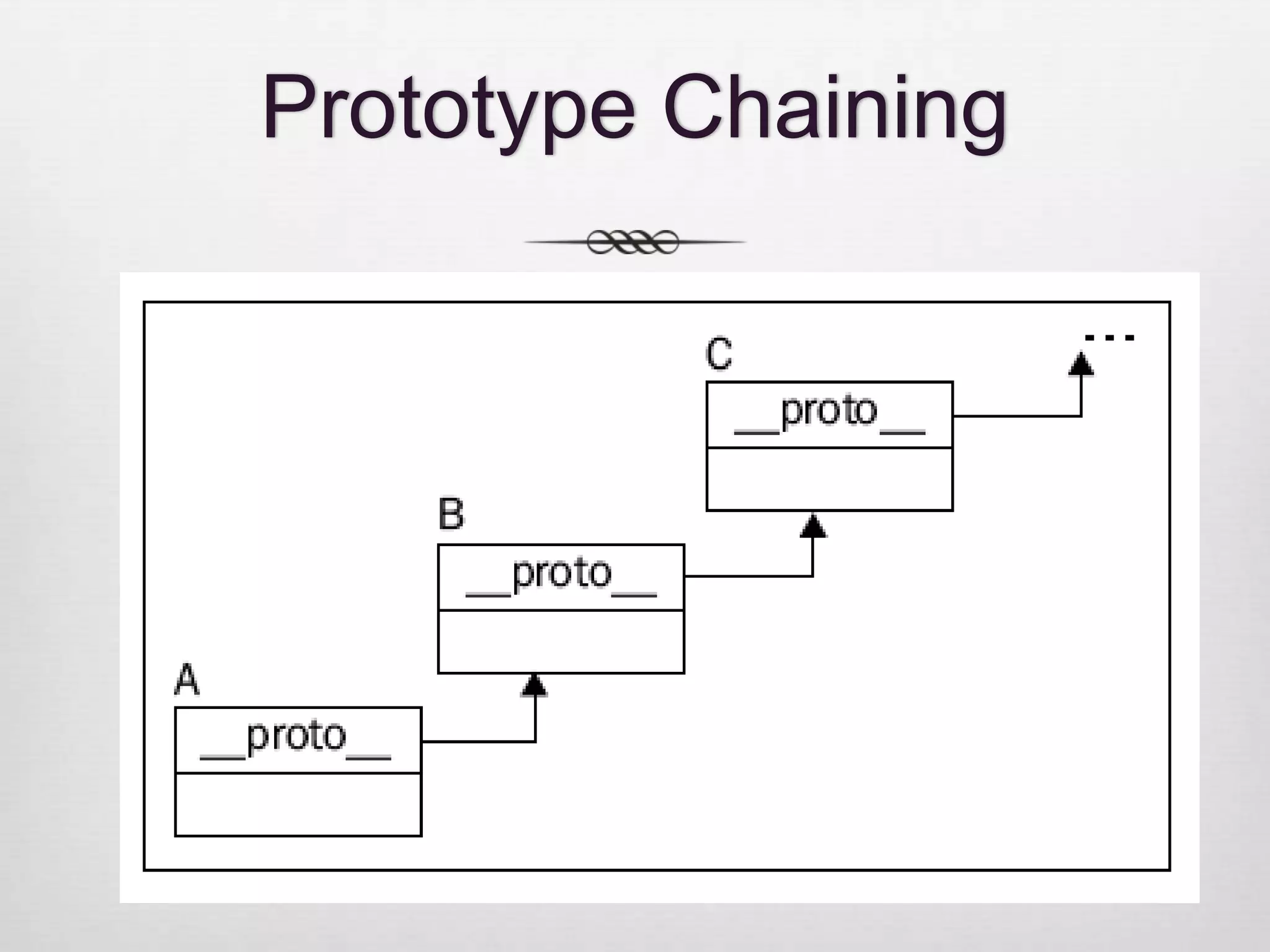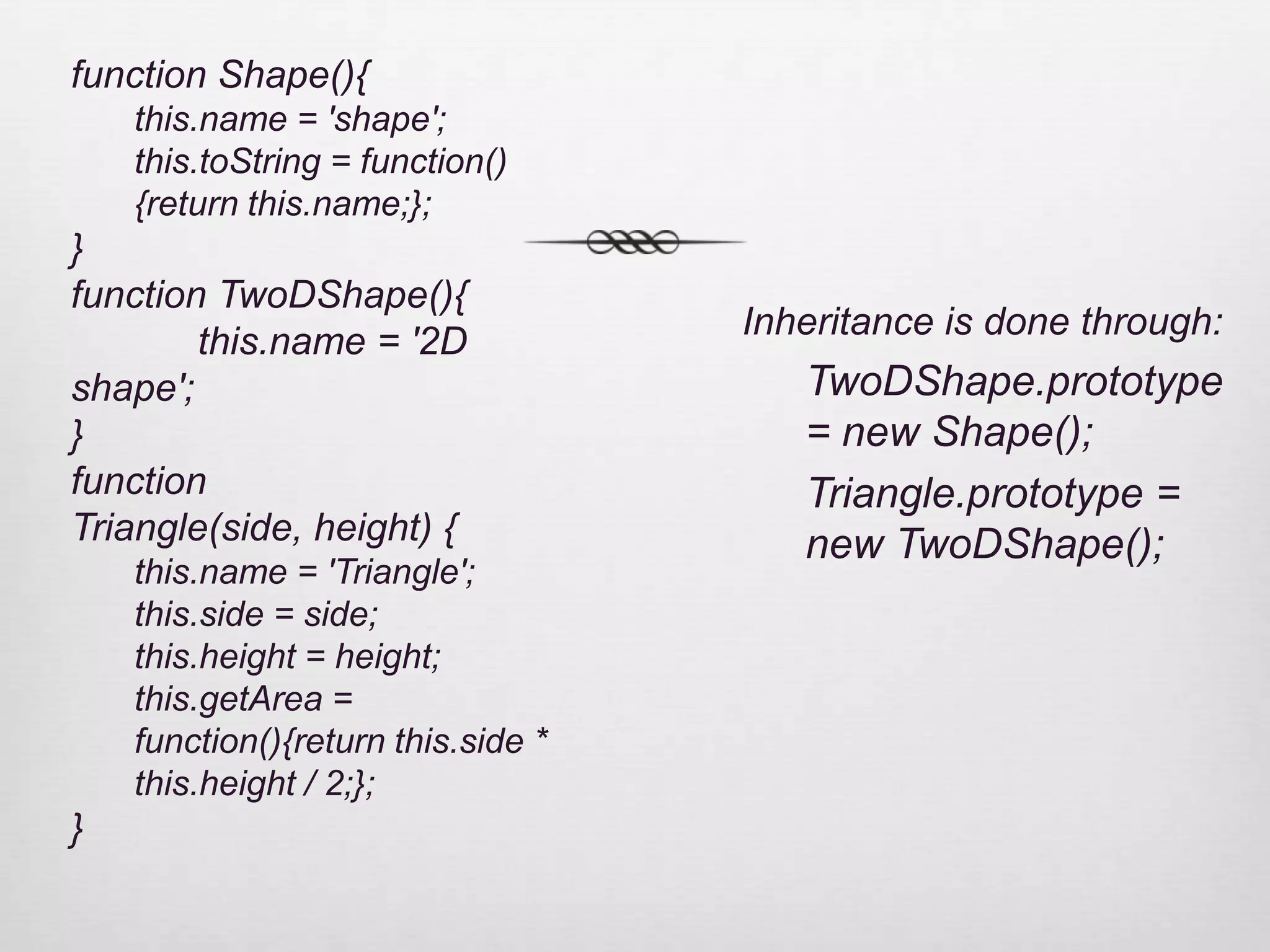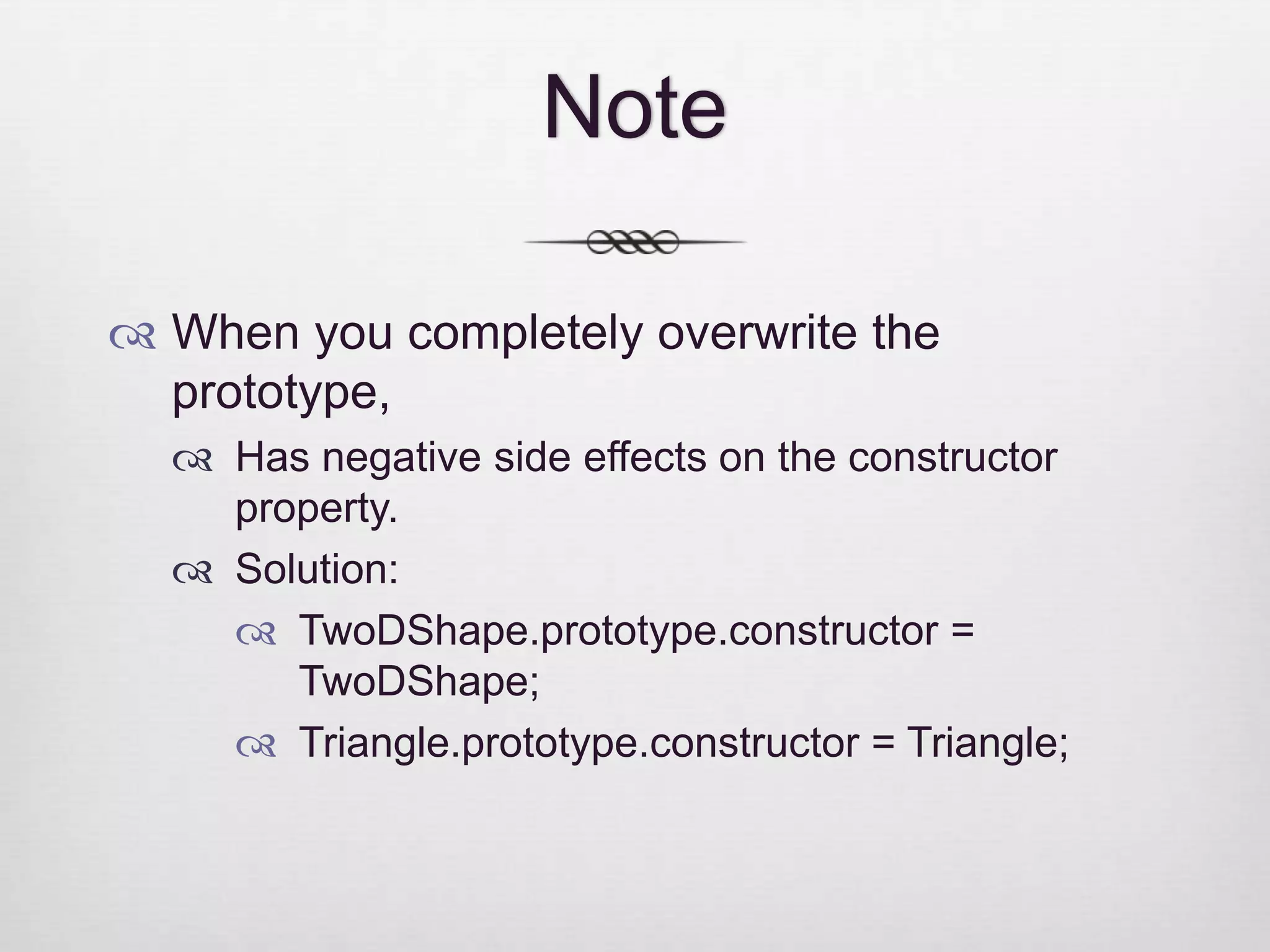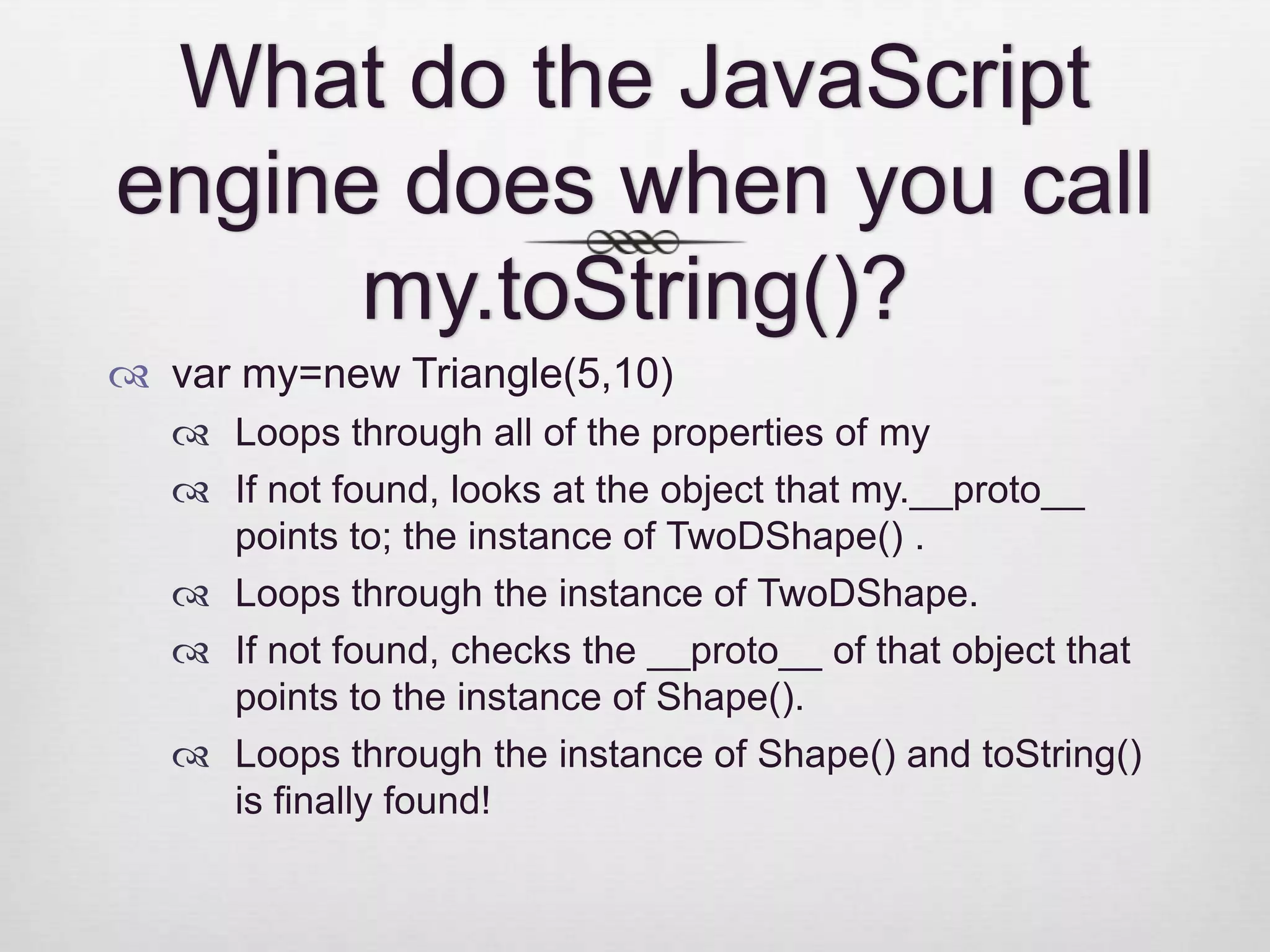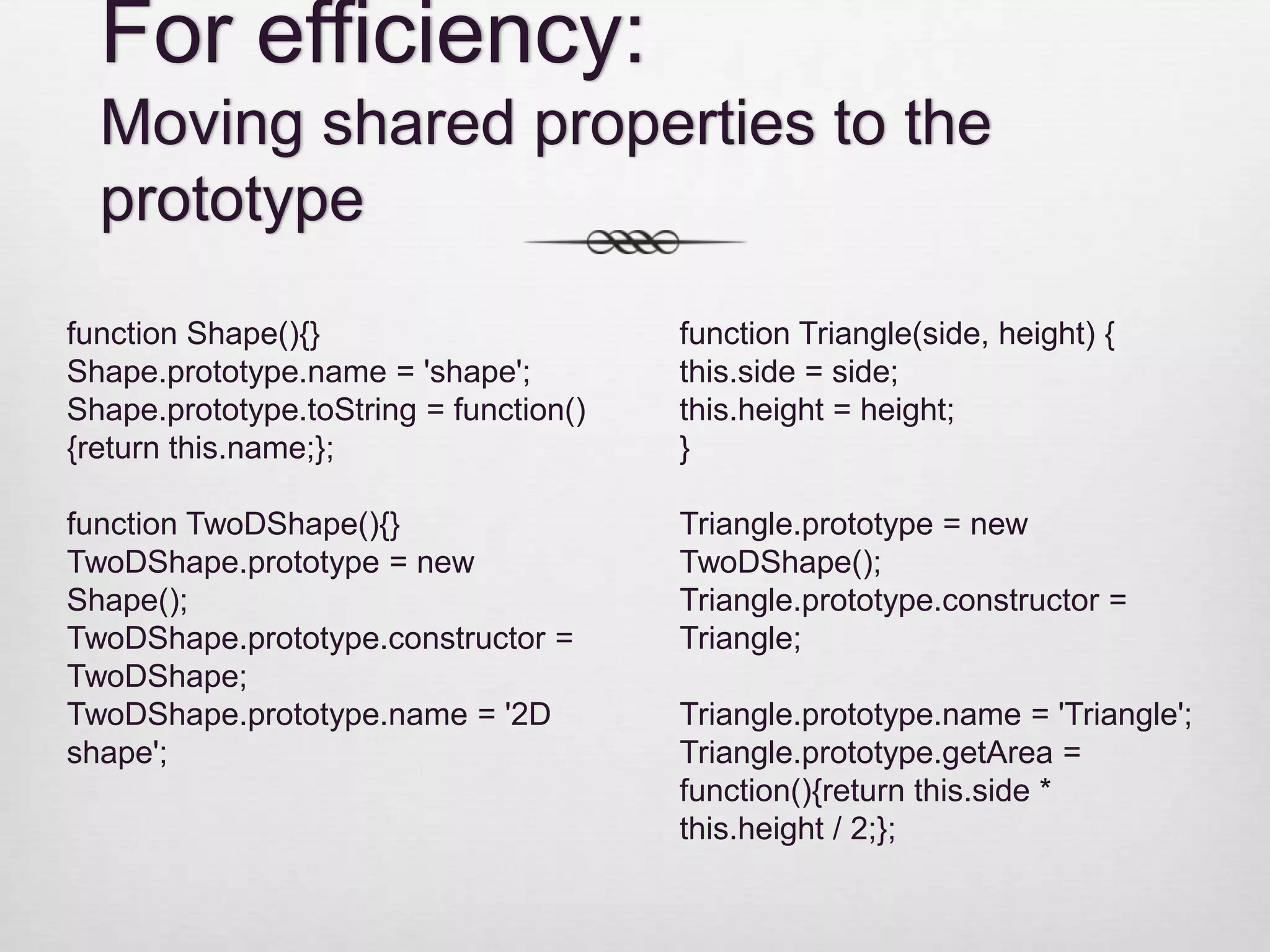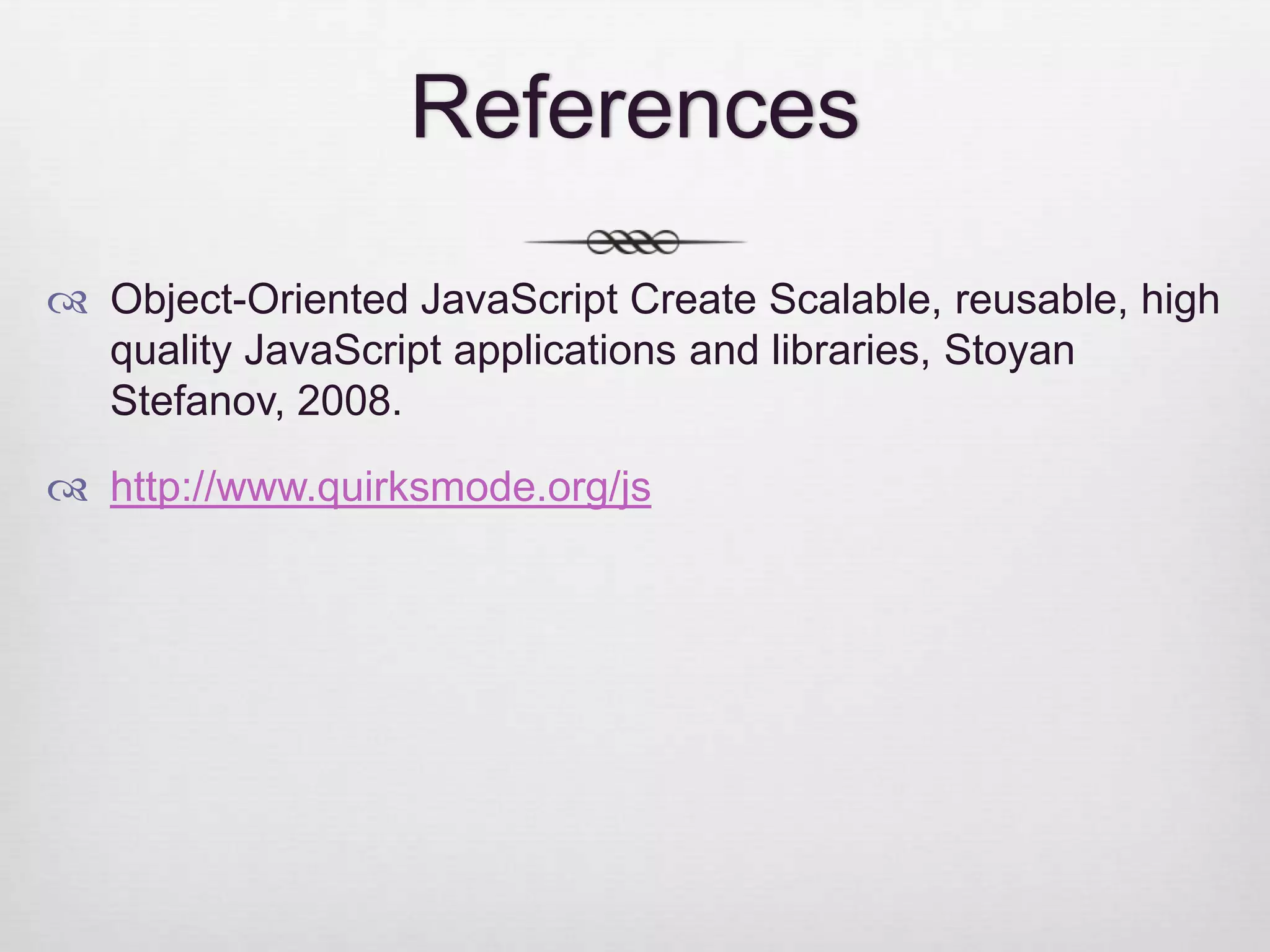The document provides an outline of a lecture on object-oriented JavaScript and inheritance. It covers key concepts like objects, properties, methods, object literals, constructor functions, and prototype inheritance. It discusses creating and accessing objects, adding and removing properties, passing objects by reference, comparing objects, and the prototype chain. Private and privileged methods and properties are explained. Different approaches to implementing inheritance like prototype chaining are also summarized.

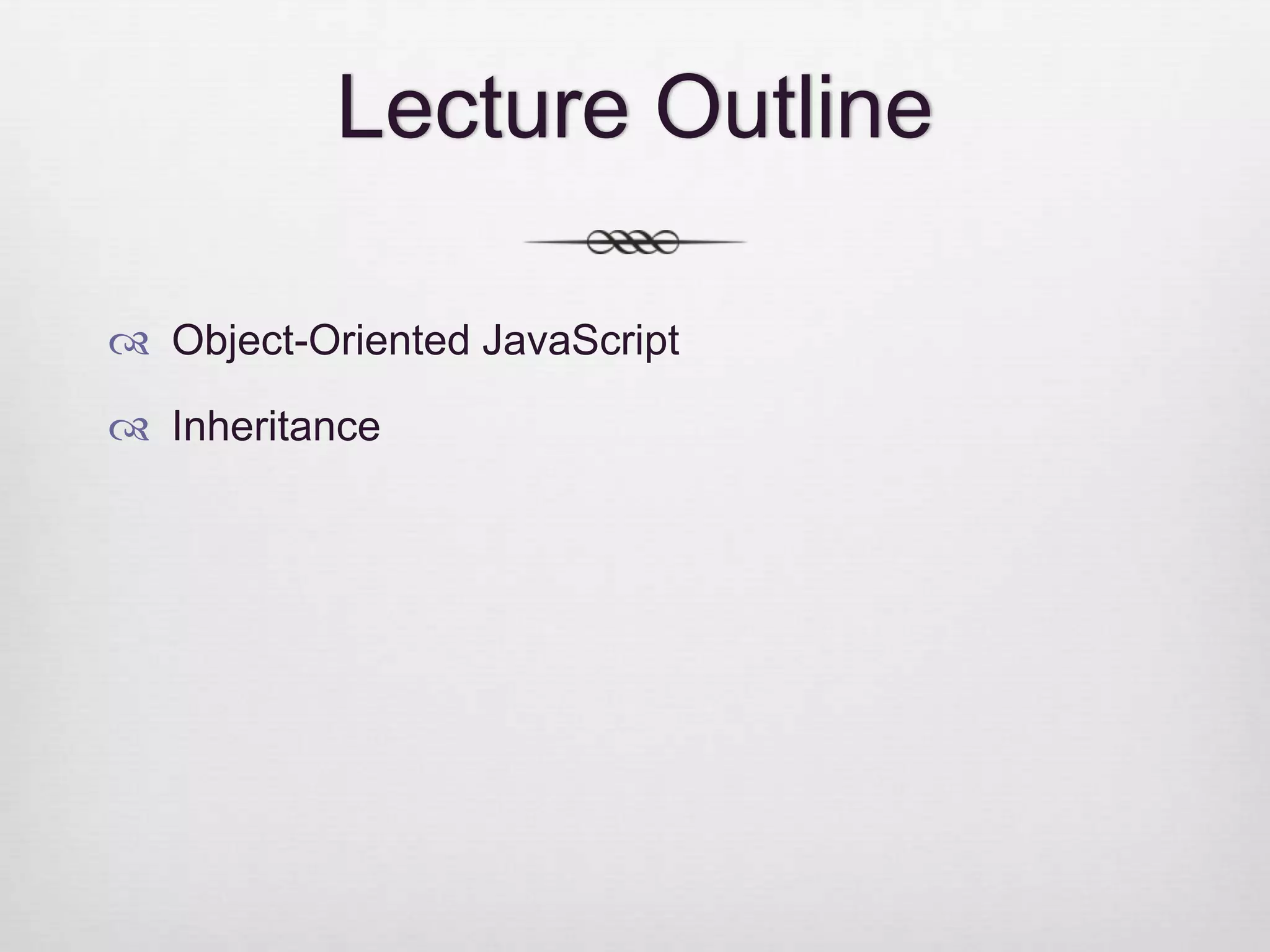
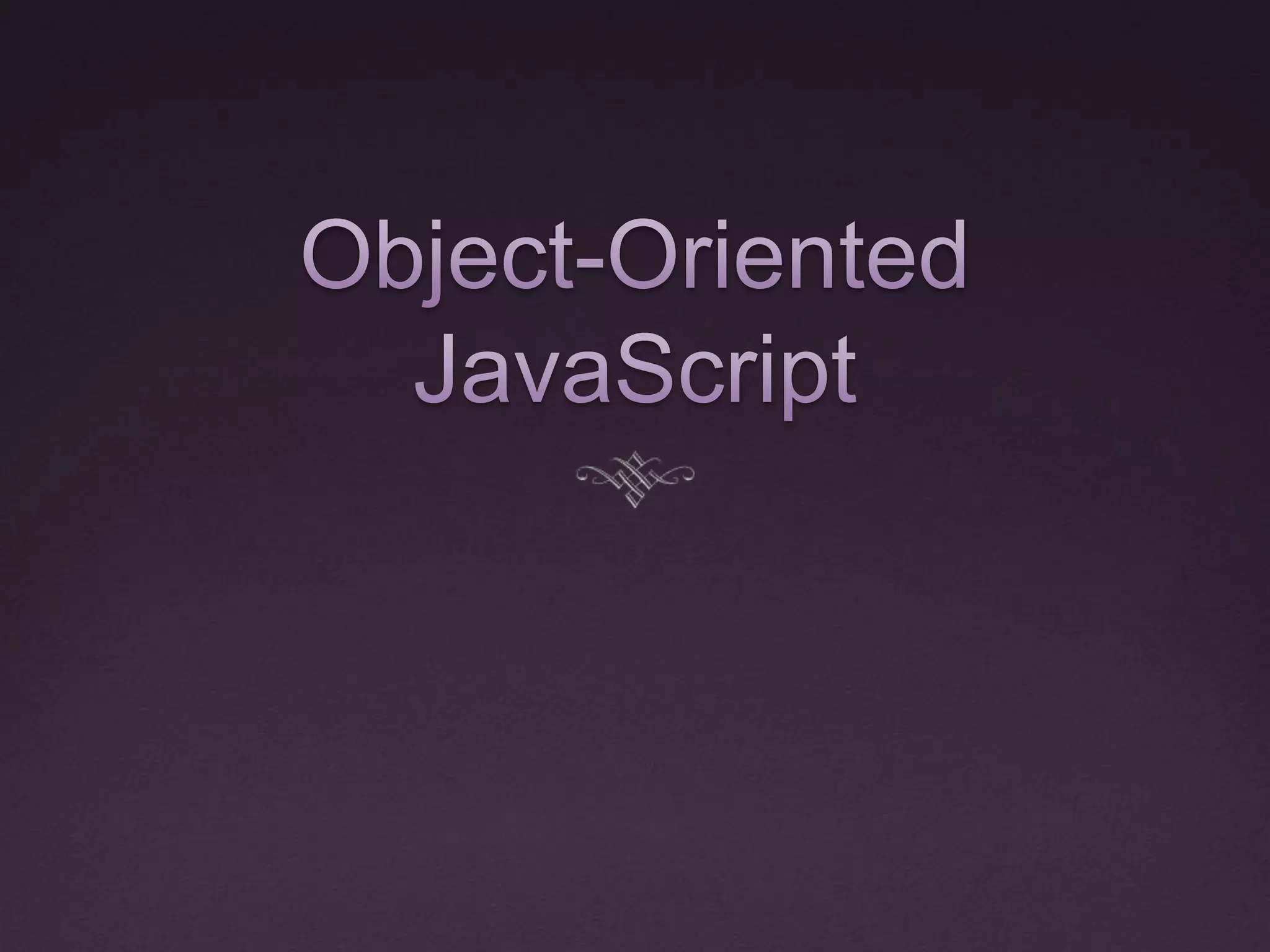
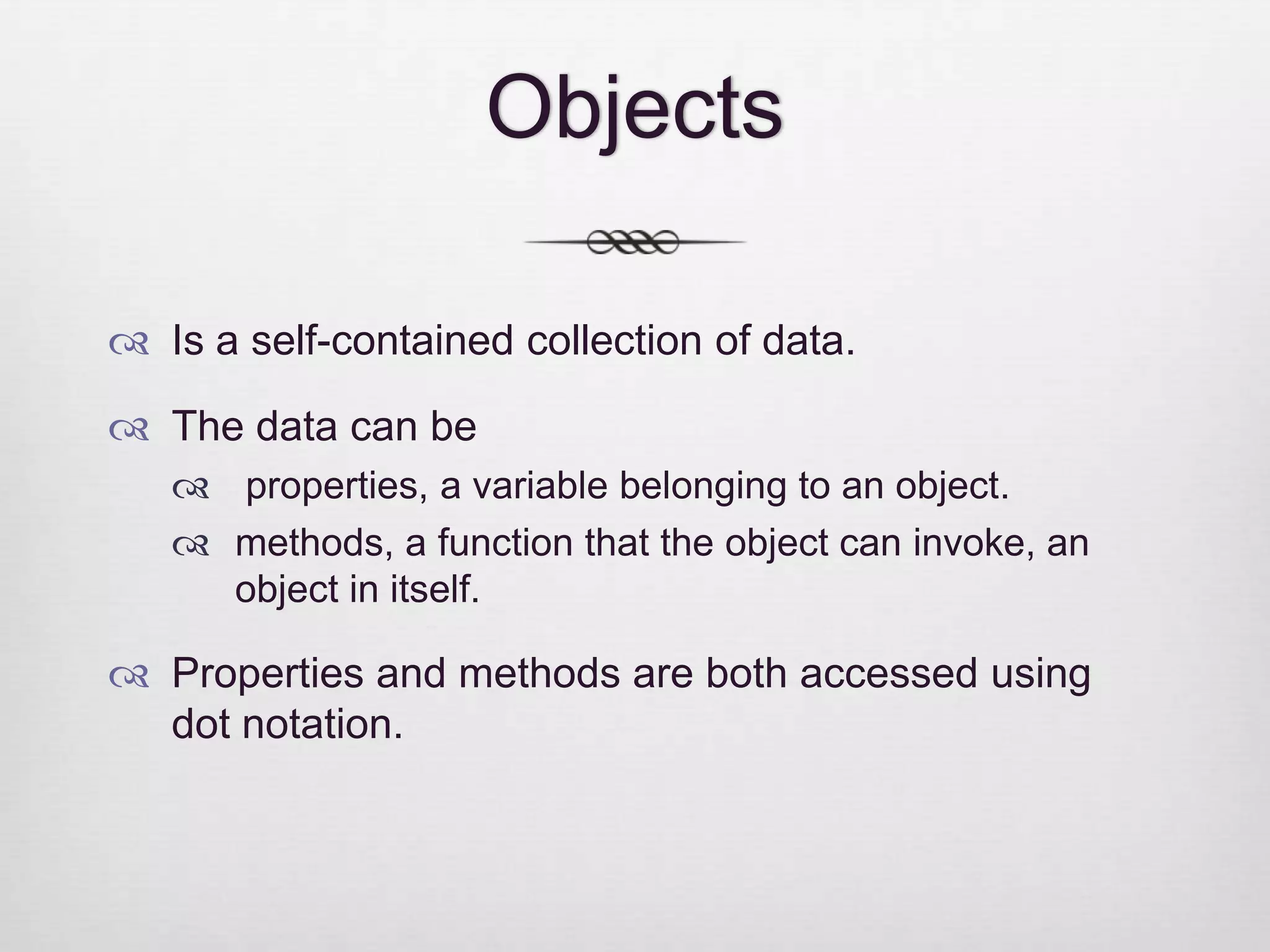
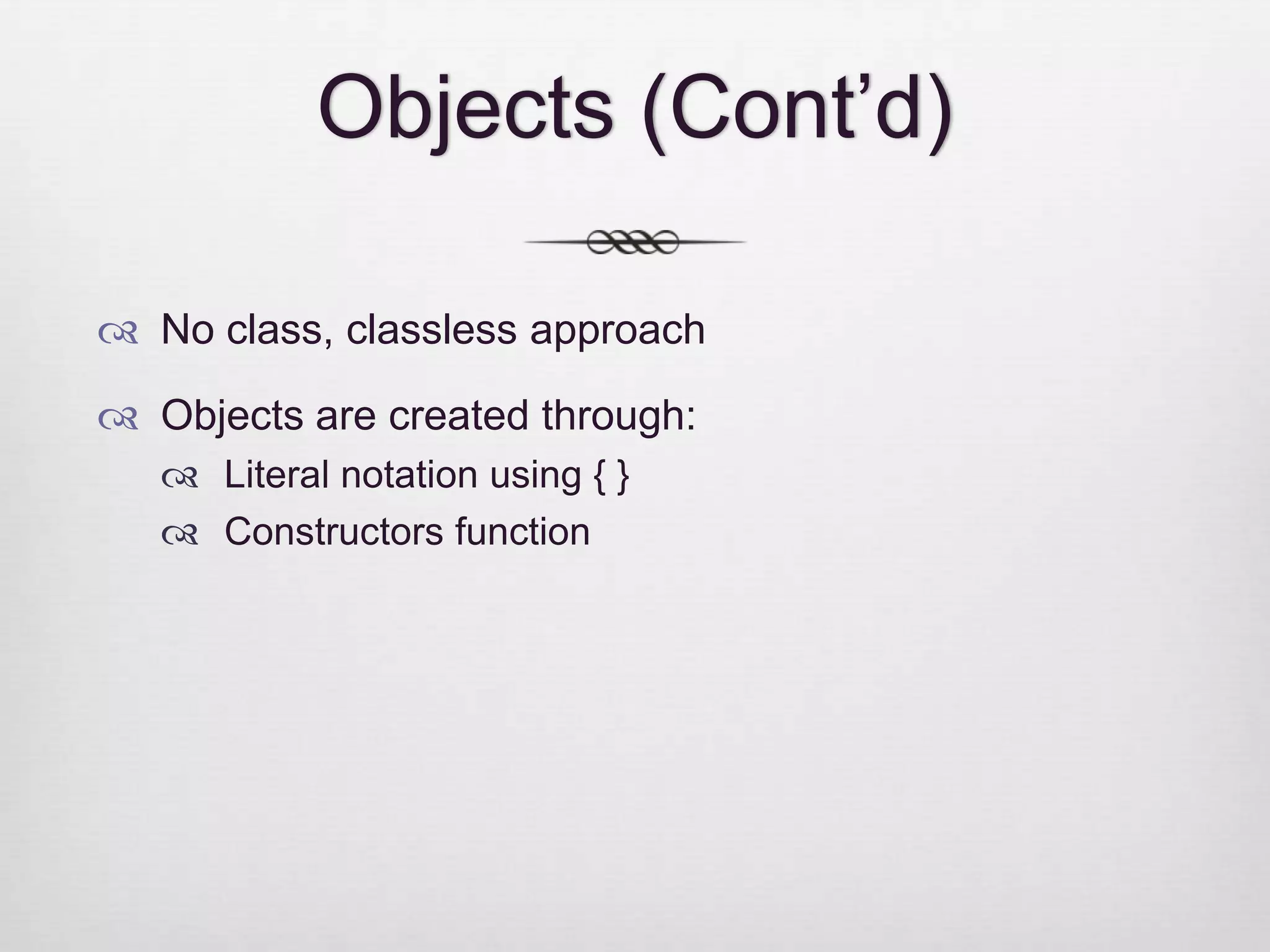
![Using object literal notation{} To create an empty object var x={} To create an object with properties and methods var student={ track:"PD", marks:[100,200,300], getTotal: function () { var sum=0; for(var i in this.marks) sum+=this.marks[i]; return sum; } }](https://image.slidesharecdn.com/lecture4-130108142925-phpapp02/75/Object-Oriented-JavaScript-6-2048.jpg)
![Accessing Properties Using square bracket notation student[„track‟] PD Using the dot notation, student.track PD](https://image.slidesharecdn.com/lecture4-130108142925-phpapp02/75/Object-Oriented-JavaScript-7-2048.jpg)
![Objects inside Objects Example var book = { name: 'Catch-22', published: 1961, author: { firstname: 'Joseph', lastname: 'Heller' } }; book.author.firstname book['author']['lastname']](https://image.slidesharecdn.com/lecture4-130108142925-phpapp02/75/Object-Oriented-JavaScript-8-2048.jpg)
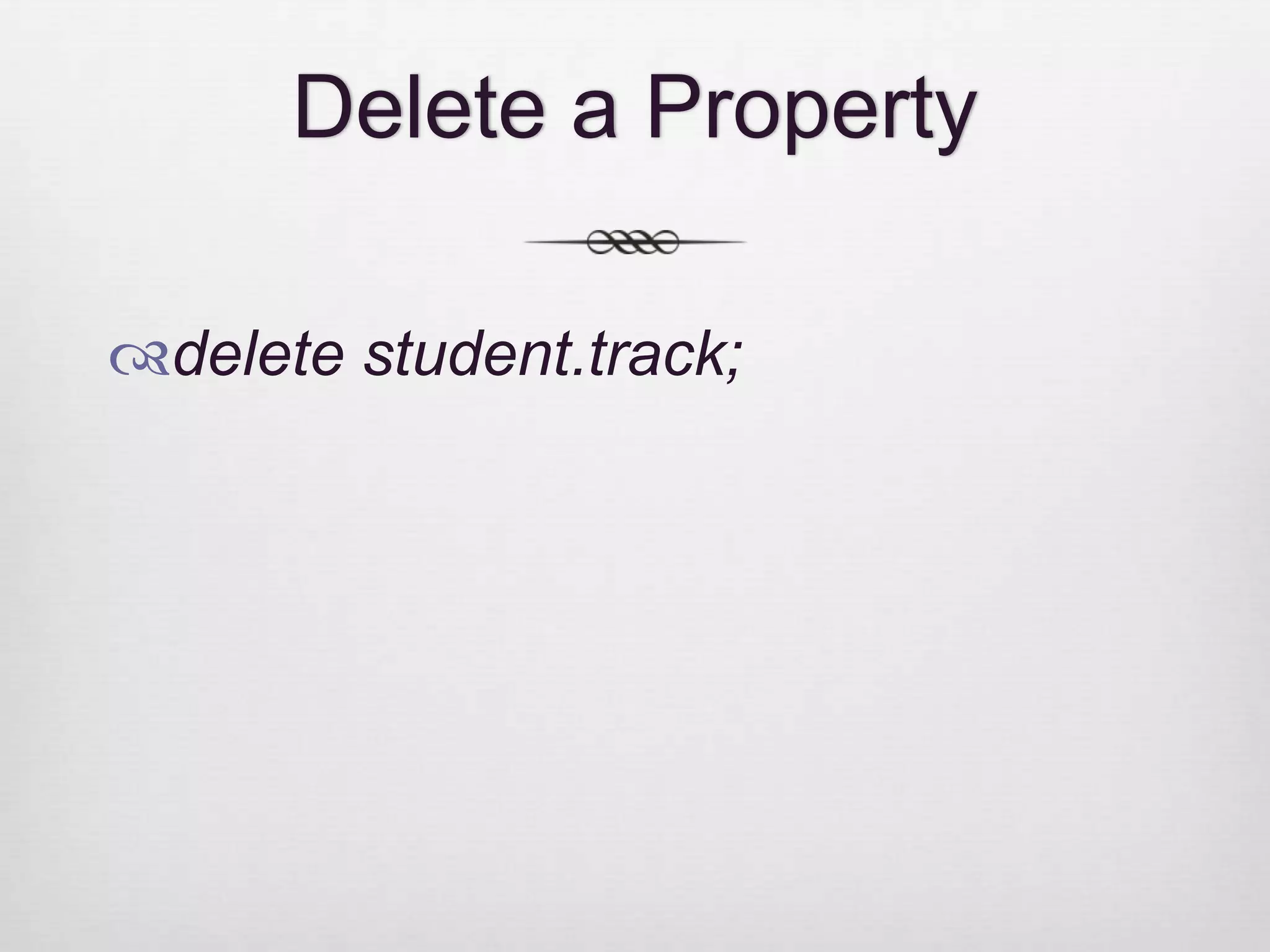
![Using Constructor function function student(name) { this.track="PD”; this.name=name; this.marks=[100,200,300]; this.getTotal= function () { var sum=0; for(var i in this.marks) sum+=this.marks[i]; return sum; }; } To create an object, use new operator var std = new student(“Smith”);](https://image.slidesharecdn.com/lecture4-130108142925-phpapp02/75/Object-Oriented-JavaScript-10-2048.jpg)
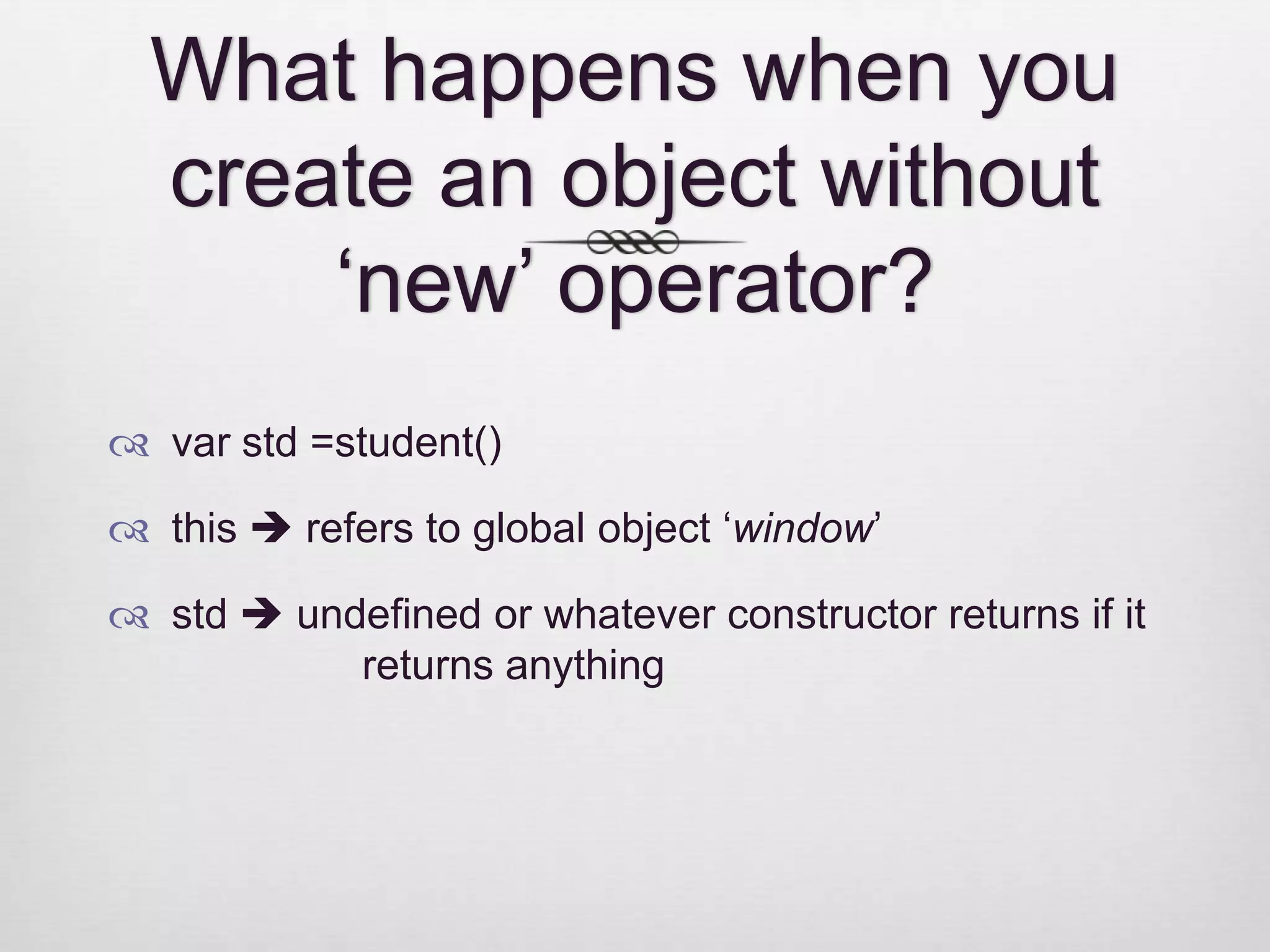
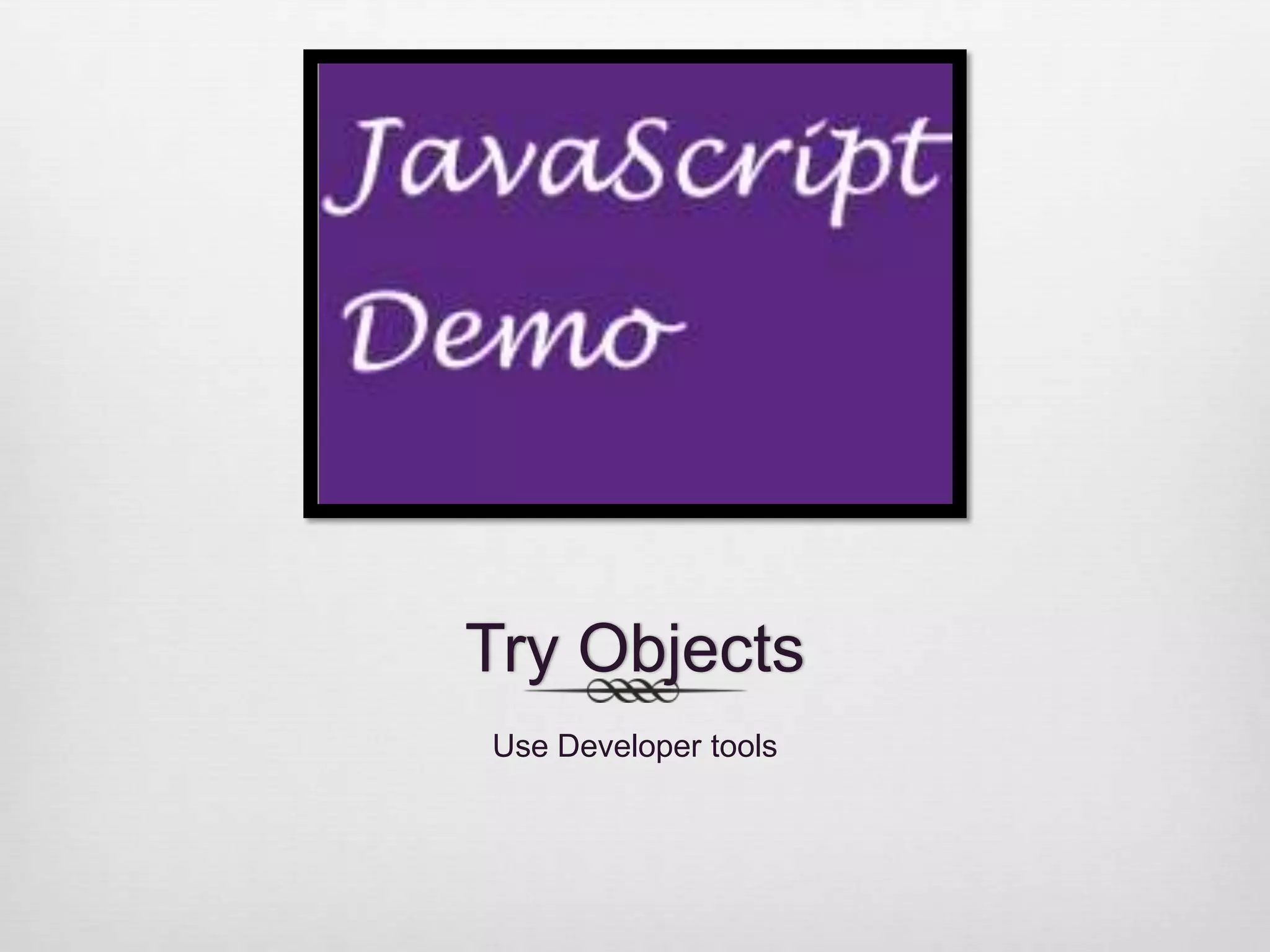
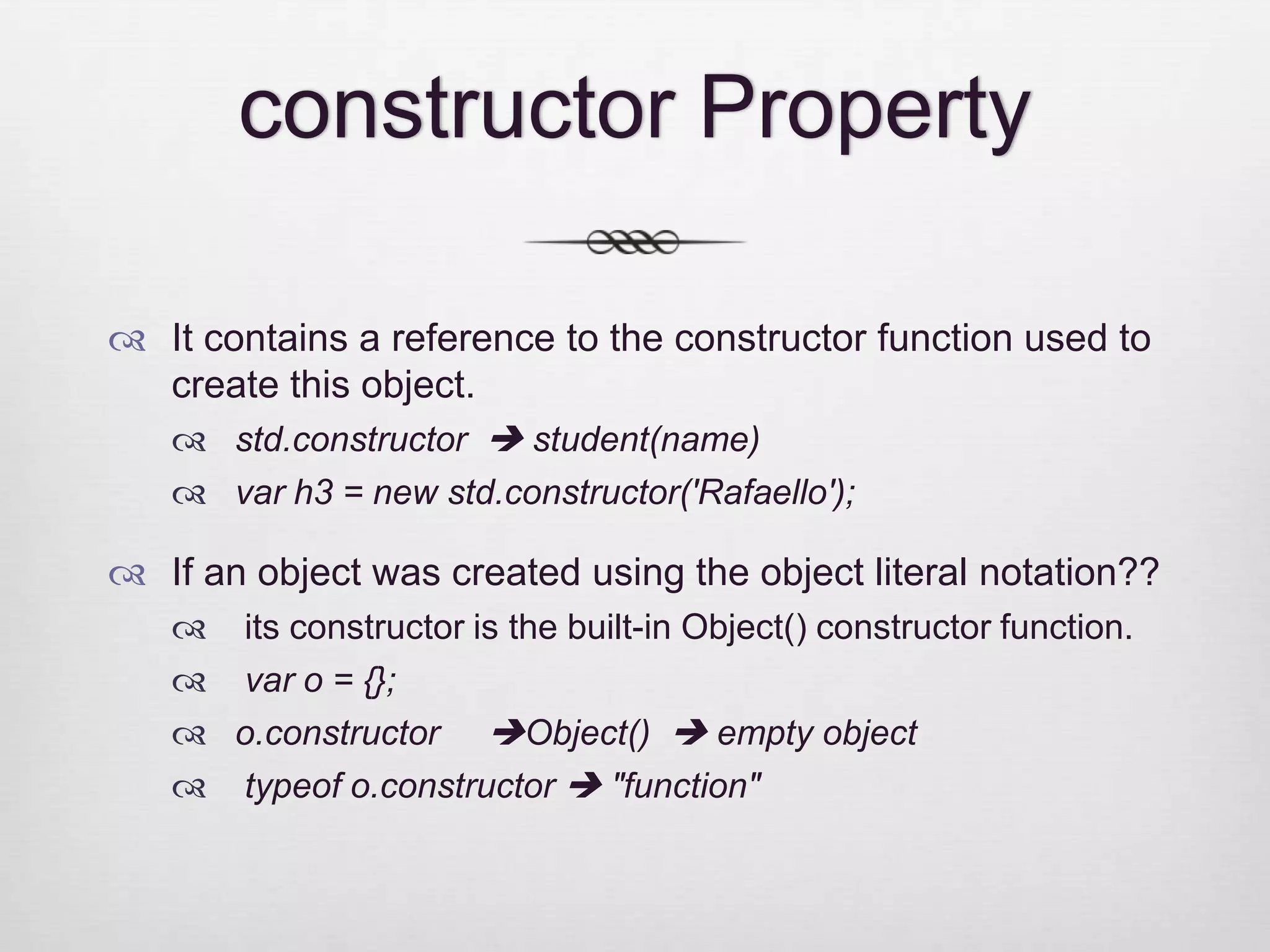
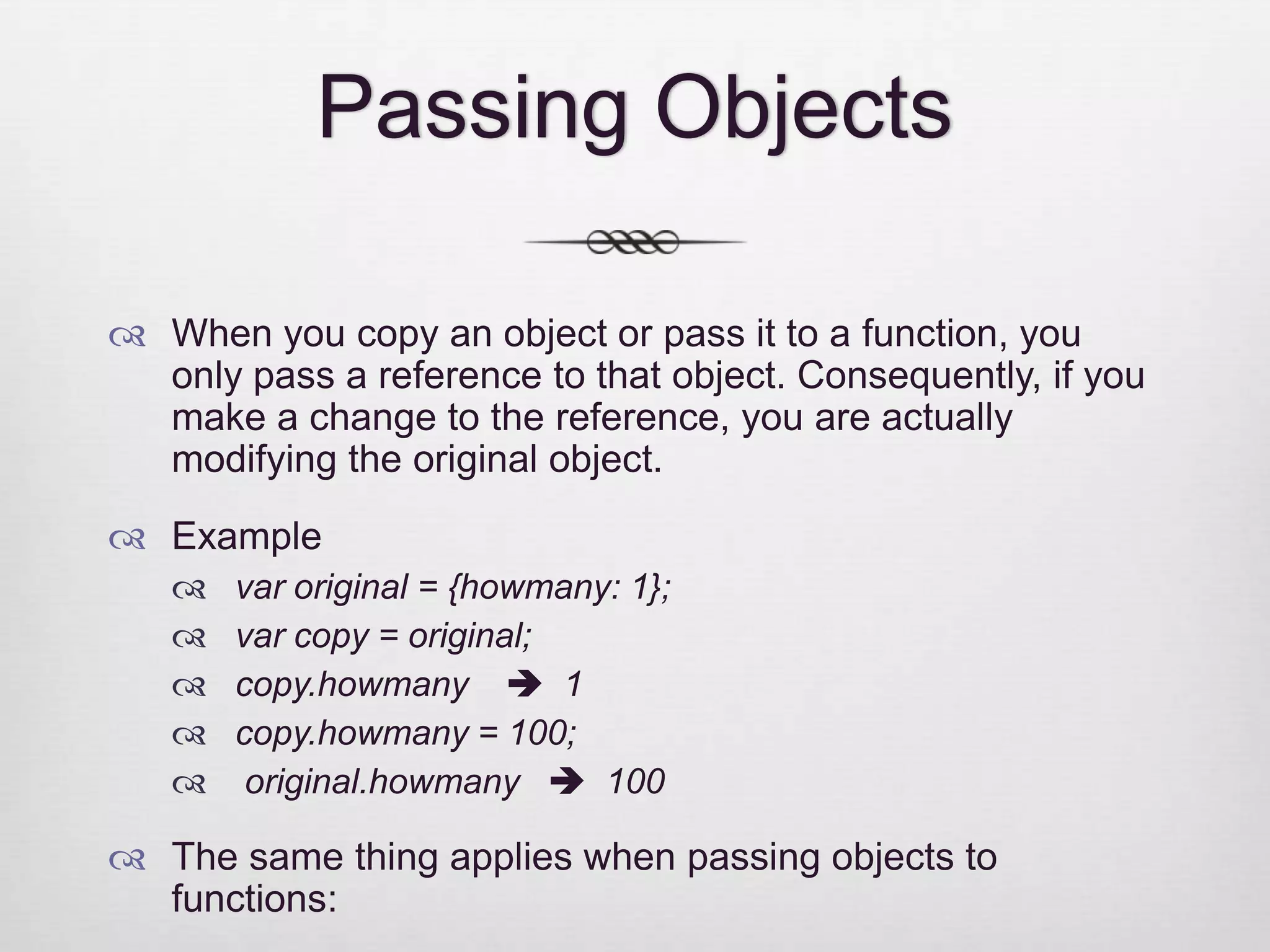
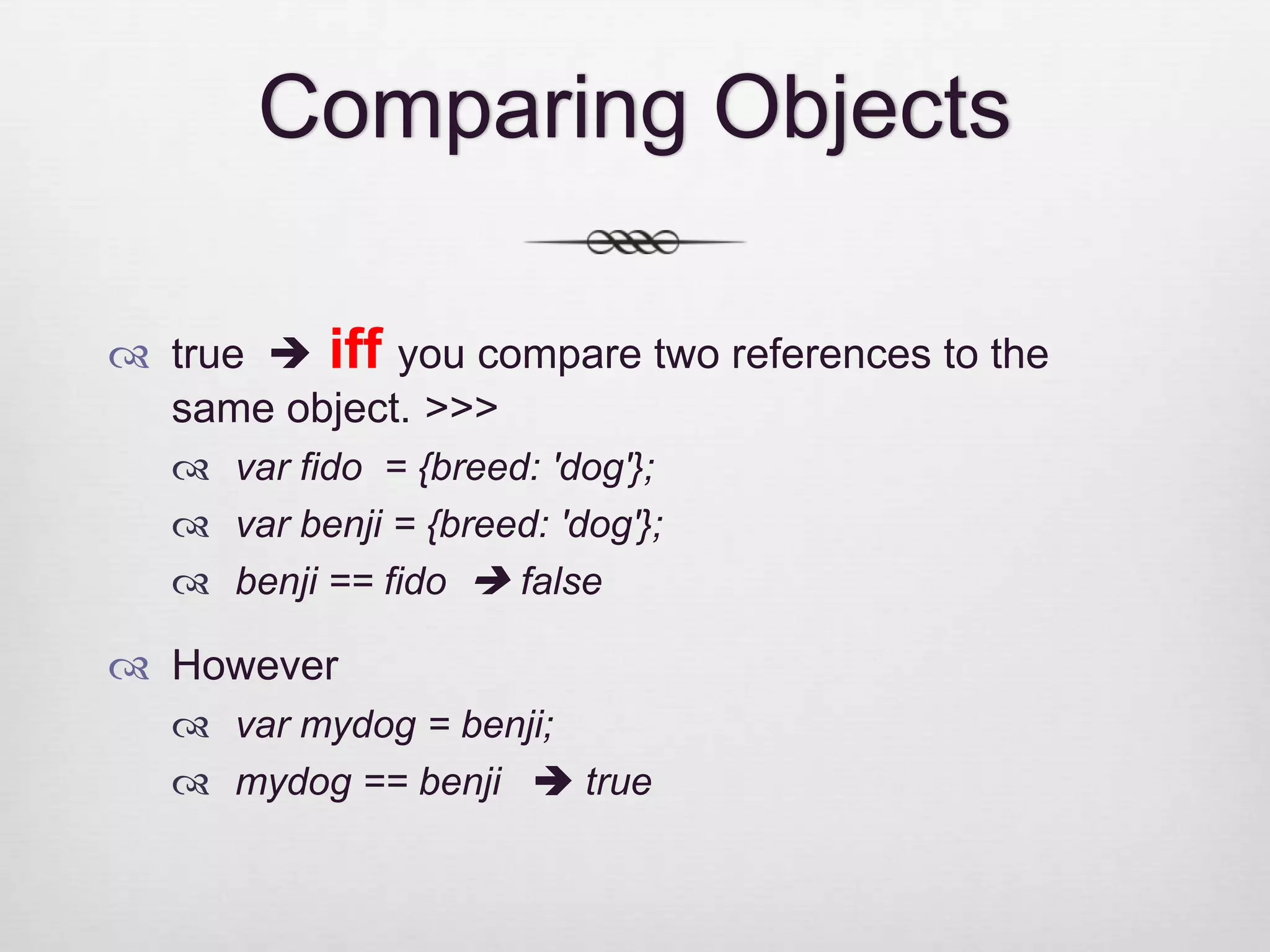
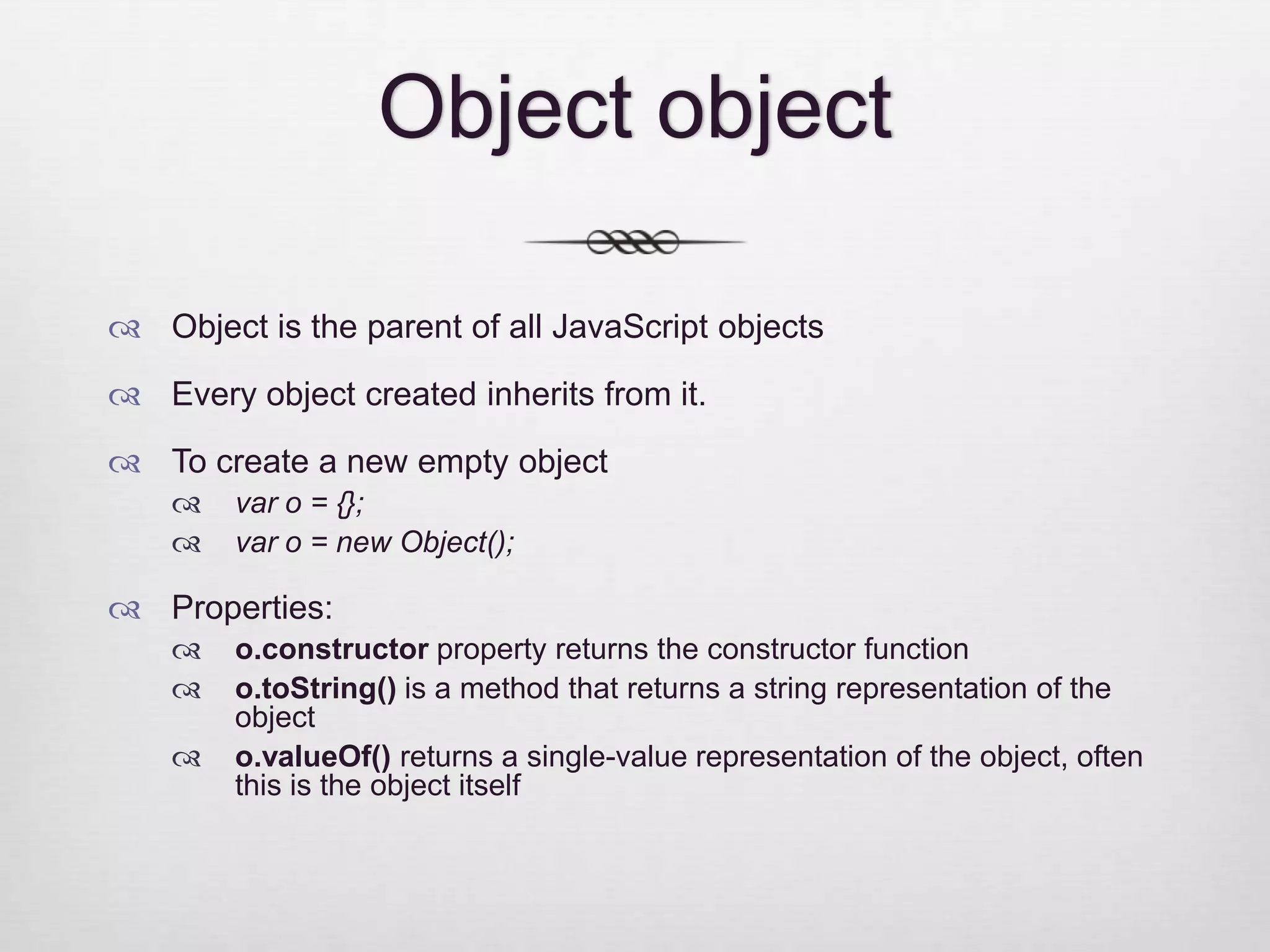
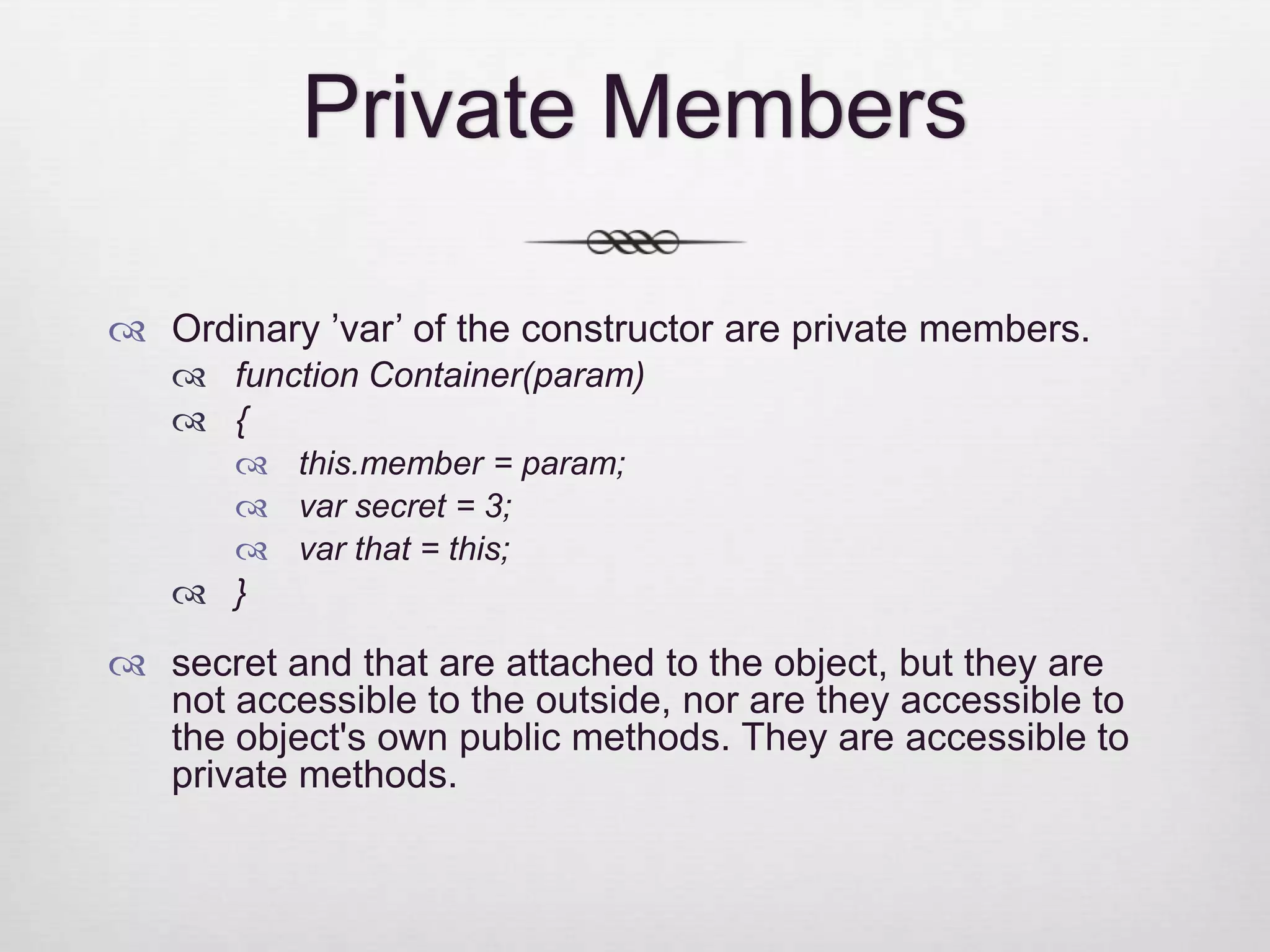
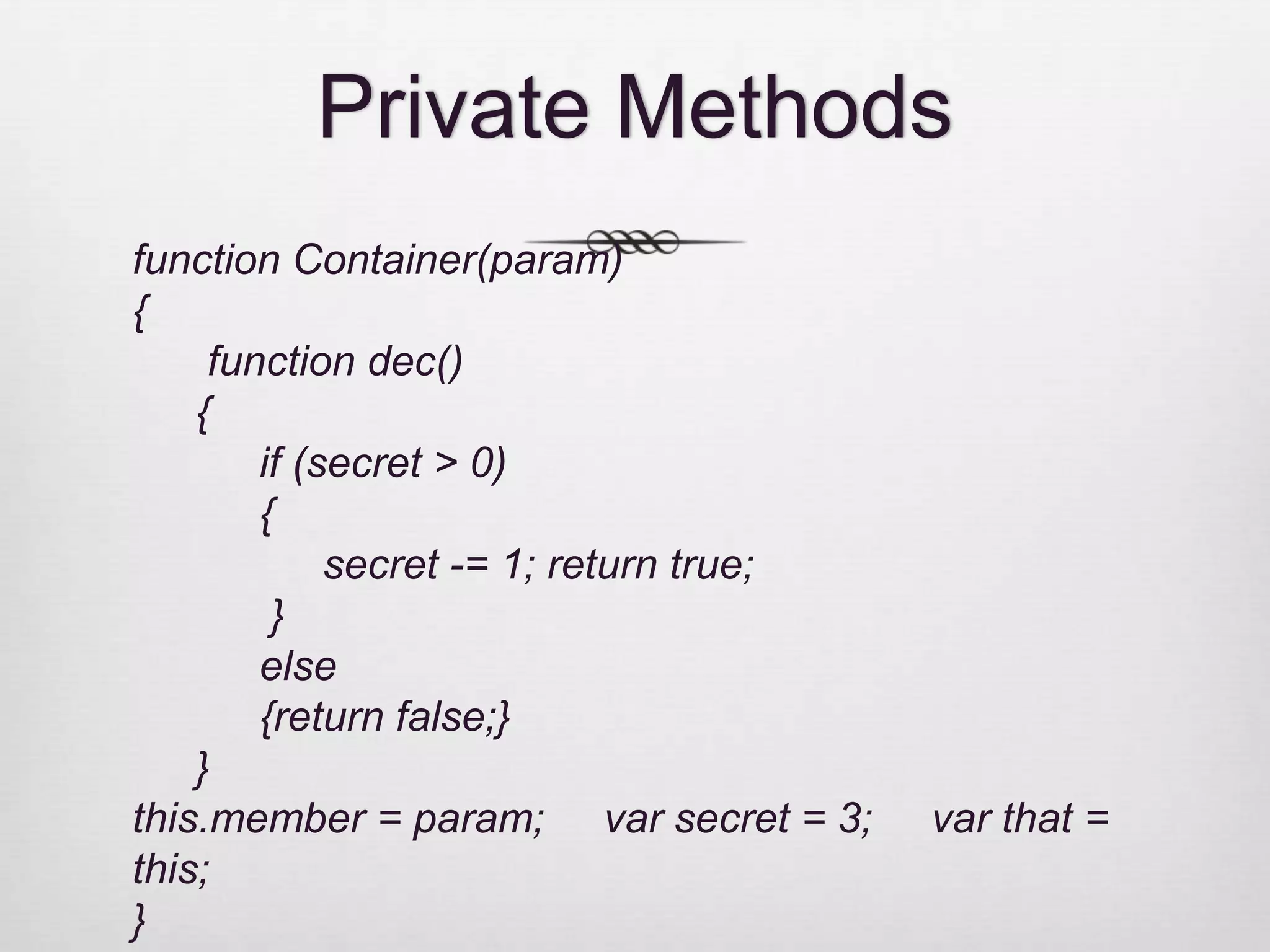
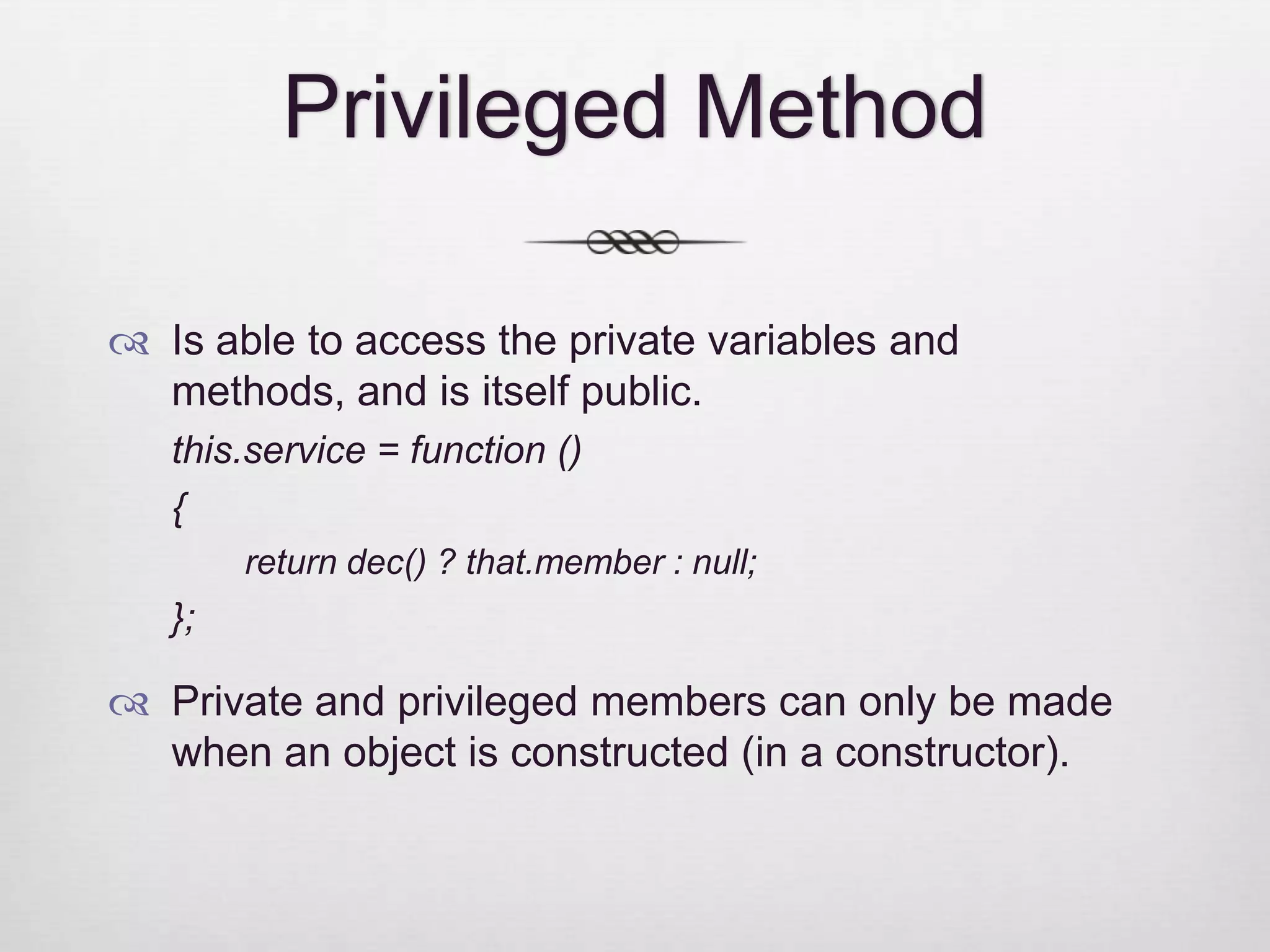

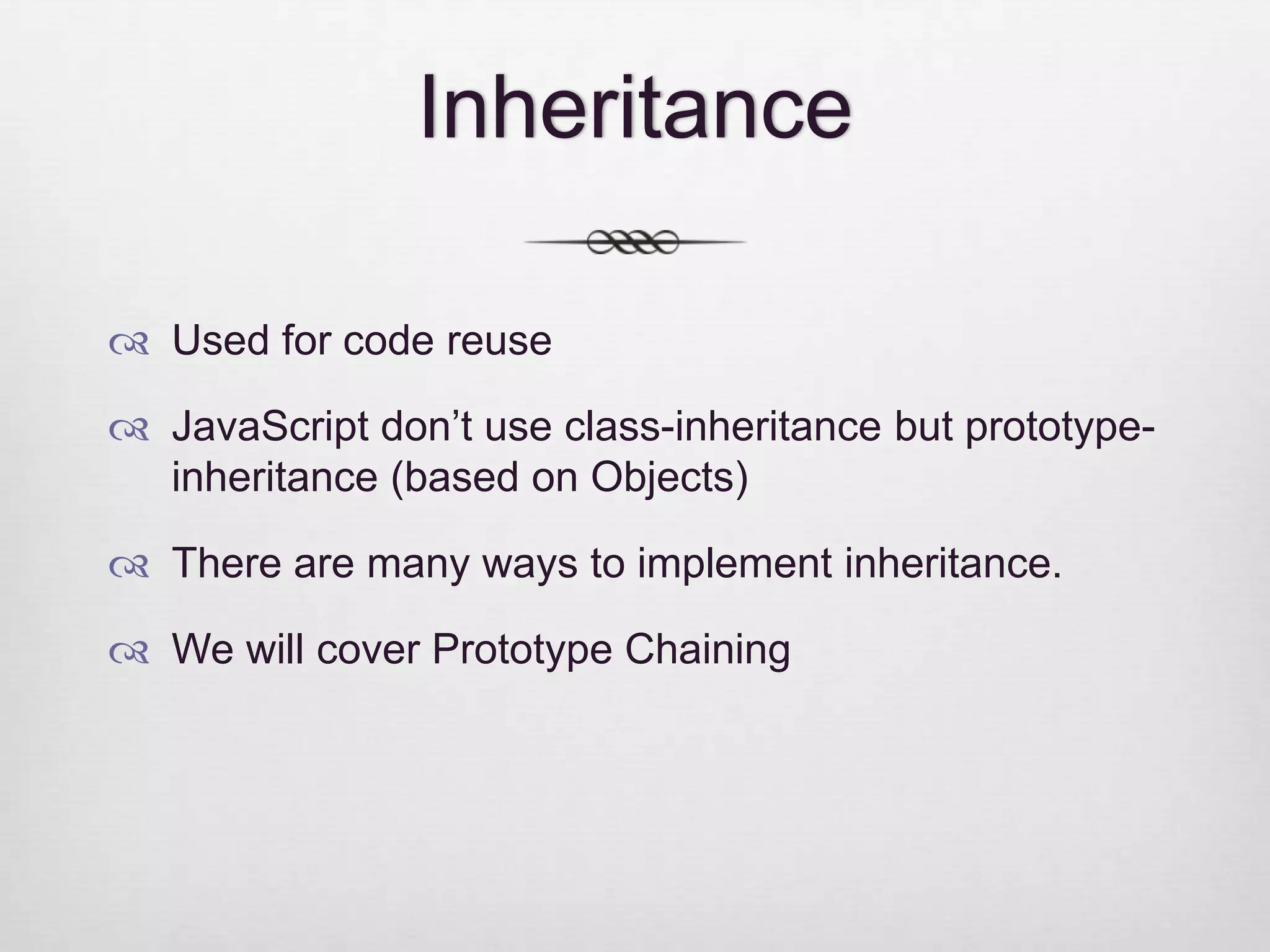
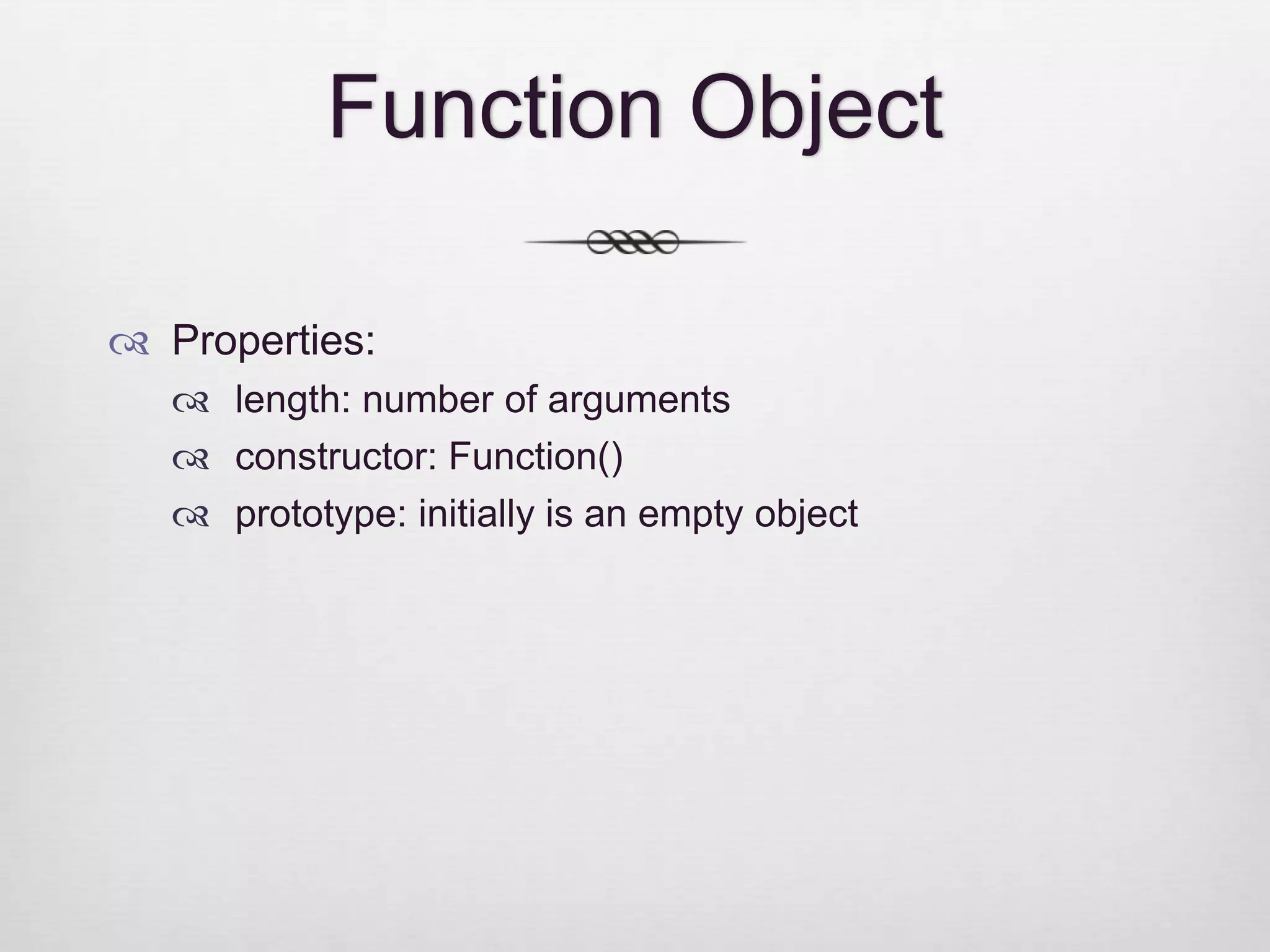
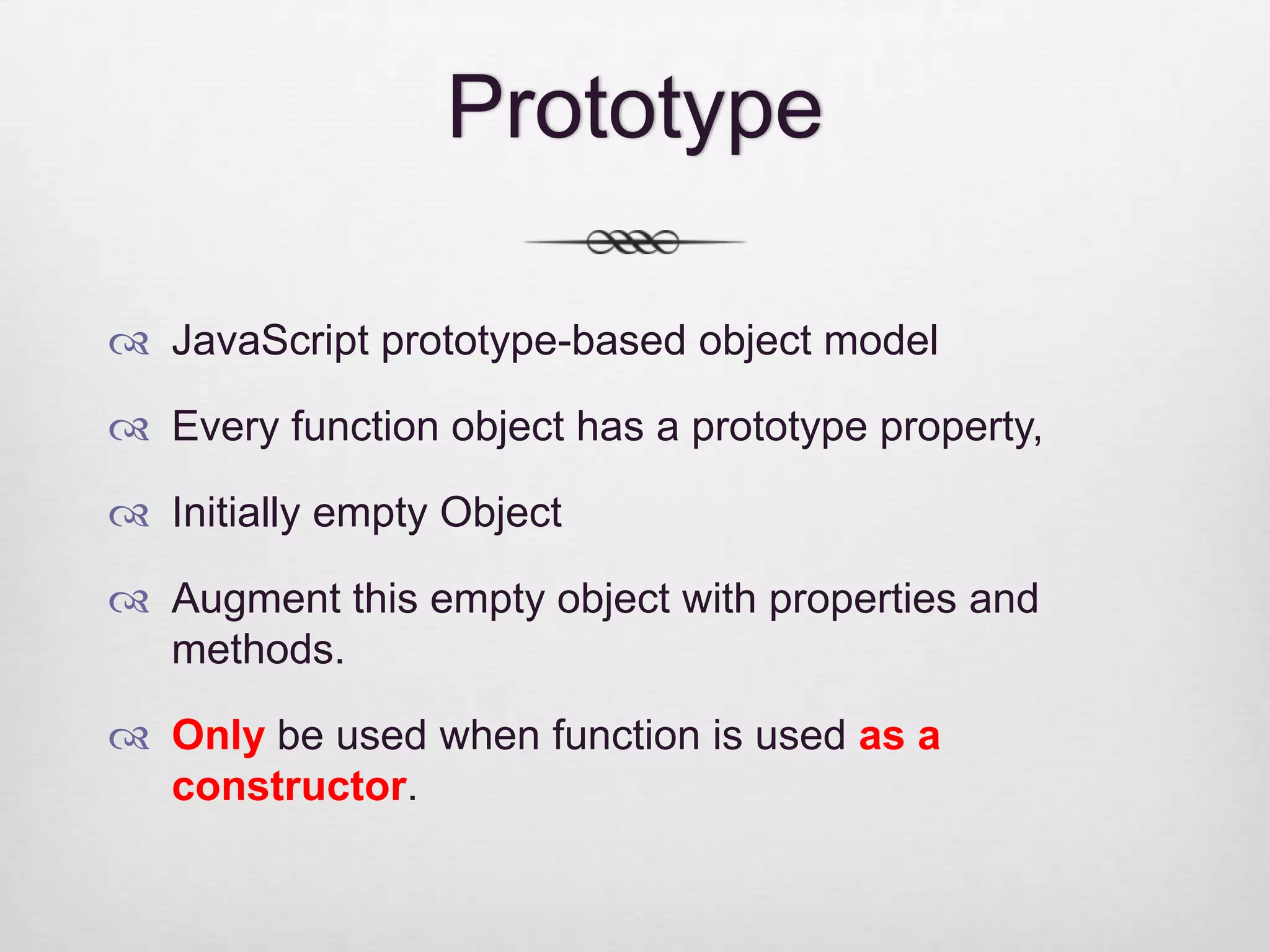
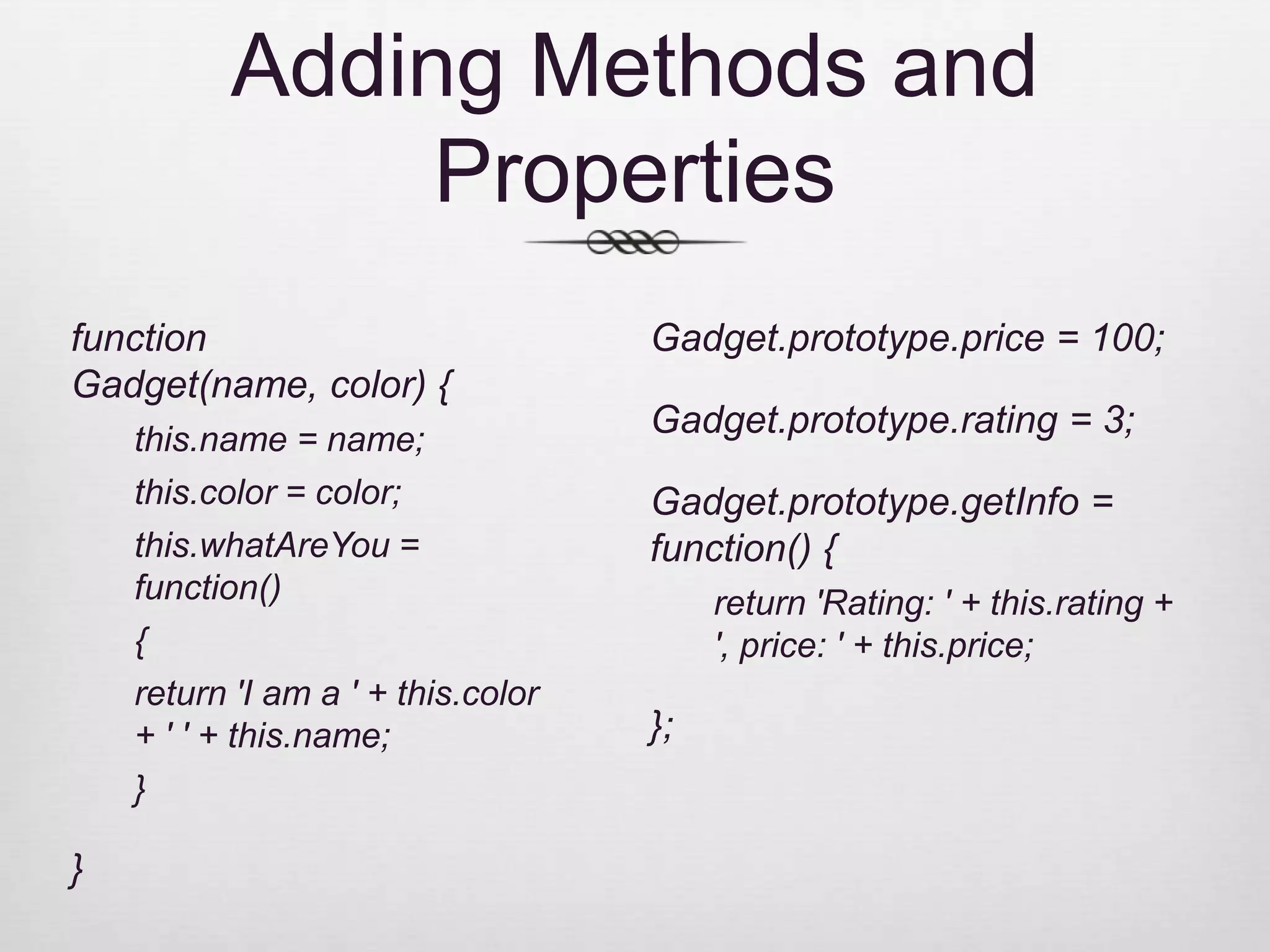
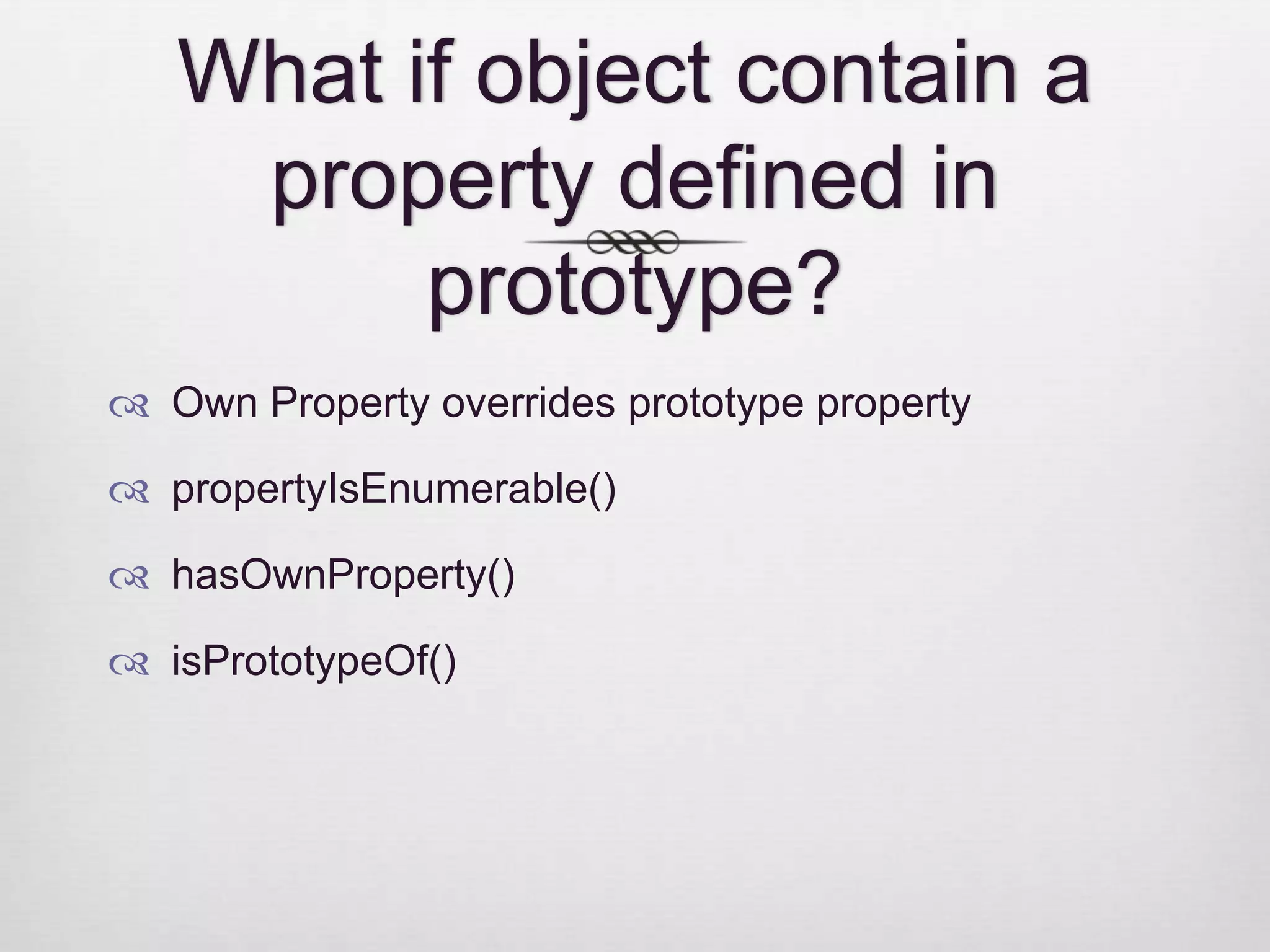
![What is the result? function Gadget(name, color) var newtoy = new Gadget('webcam', 'black'); { for (var prop in newtoy) this.name = name; { this.color = color; console.log(prop + ' = ' + this.someMethod = function(){return 1;} newtoy[prop]); } } name = webcam Gadget.prototype.price = 100; color = black someMethod = function () { return 1; } Gadget.prototype.rating = 3; price = 100 rating = 3](https://image.slidesharecdn.com/lecture4-130108142925-phpapp02/75/Object-Oriented-JavaScript-26-2048.jpg)
![What is the result? function var newtoy = new Gadget(name, color) Gadget('webcam', 'black'); { for (var prop in newtoy) { this.name = name; if (newtoy.hasOwnProperty(prop)) this.color = color; { this.someMethod = console.log(prop + '=' + function(){return 1;} newtoy[prop]); } } } Gadget.prototype.price = 100; name = webcam Gadget.prototype.rating = 3; color = black someMethod = function () { return 1; }](https://image.slidesharecdn.com/lecture4-130108142925-phpapp02/75/Object-Oriented-JavaScript-27-2048.jpg)
![Augmenting Built-in Objects Array.prototype.inArray = function(needle) { for (var i = 0, len = this.length; i < len; i++) { if (this[i] === needle) { return true; } } return false; }](https://image.slidesharecdn.com/lecture4-130108142925-phpapp02/75/Object-Oriented-JavaScript-28-2048.jpg)
